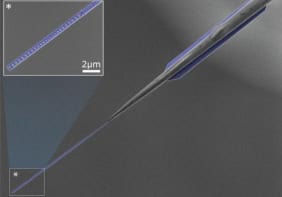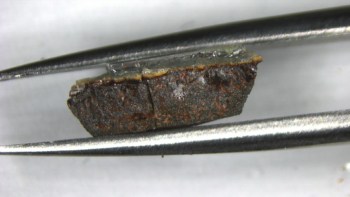The best way to silence a noisy piece of machinery could be to drill holes in the casing that surrounds it. That is the remarkable conclusion of physicists in Spain, who have discovered that an array of holes in a solid plate actually reduces the amount of sound it transmits at certain wavelengths. Dubbed “extraordinary acoustic screening” (EAS), the effect could someday be used to design acoustic shields that block sound while allowing air and light to pass through.
The effect was noticed by a team led by Francisco Meseguer of the Polytechnic University of Valencia and colleagues from there and the Institute of Optics in Madrid. The team placed a series of millimetre-thick metal plates in a tank of water. Ultrasonic waves from a transducer were fired at one side of a plate, and the sound transmitted through was measured with another transducer. Measurements were carried out as the wavelength of the ultrasound was varied from 4.5-8.8 mm (Phys Rev Lett 101 084302).
Experiments on solid plates showed that the materials shielded sound as predicted by the “mass law”, which says that doubling the mass per unit area of a solid will reduce the intensity of the sound passing through by -5 dB However, when holes were drilled in the plates, the team saw a big drop in transmission at certain wavelengths. For example, ultrasound with a wavelength of 7mm was attenuated a further -10 dB by a perforated plate, compared to a solid plate of the same thickness.
Spacing between holes important
The team found that the thickness of the plates, the diameter of the holes, the spacing between the holes and the way in which they holes were arranged (whether in square lattices or randomly) all affected the ultrasound transmission. The attenuation was greatest when the spacing between the holes was about the same as the wavelength of the sound.
Meseguer believes that EAS occurs when the incident sound creates acoustic waves on the surface of the plates. The presence of equally-spaced holes causes the acoustic waves to interfere, preventing some of the sound energy from being transmitted through the plate.
More bizarre acoustic properties
This is not the first time that a perforated plate has been seen to have bizarre acoustic properties. Last year Yan-Feng Chen, Ming-Hui Lu and colleagues at Nanjing University in China reported that the transmission of sound through a plate with an array of narrow slits increased greatly at certain wavelengths (Phys Rev Lett 99 174301).
Chen and Lu dubbed the effect dubbed “extraordinary acoustic transmission” (EAT) and they told physicsworld.com that EAT and EAS are manifestations of the same interference effect.
A similar effect called ‘extraordinary optical transmission’ (EOT) has been seen to occur when light is shone through a metal plate with holes in it.
Meseguer and colleagues made their measurements in water not air, because the acoustical properties of water made it possible to do the experiment on a bench top rather than in a room-sized chamber. However, he believes that EAS should also occur in air.
As a result Meseguer speculates that EAS could be used to reduce the noise from some types of machinery that give off sound at specific frequencies — with the added bonus of letting light and air in and out of the acoustic enclosure.
Looking further into the future, Meseguer believes that perforated plates could be used to make acoustic metamaterials for use in acoustic cloaks and other novel devices.
Acoustic metamaterial researcher José Sánchez-Dehesa — who is at the Polytechnic University of Valencia but is not part of Meseguer’s group — described EAS as a “fundamental” discovery in acoustics. However, he pointed that more work was needed to establish how perforated materials could be used to create acoustic metamaterials.



